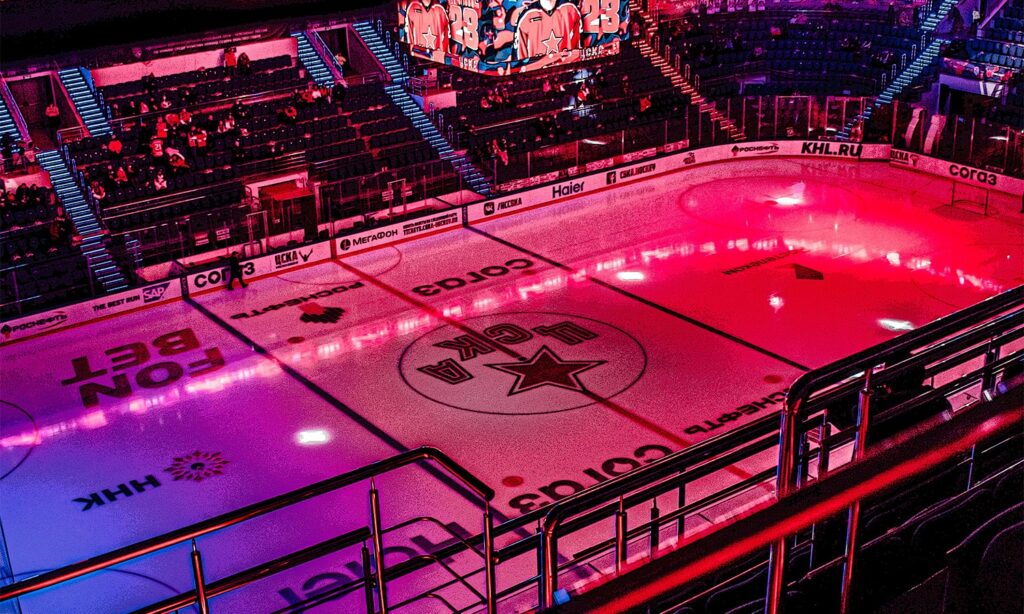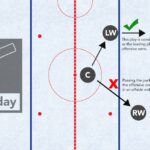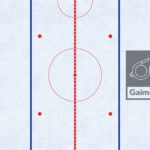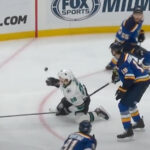When it comes to team sports, even individual sports, the games are played on a surface made up of various markings or lines.
These lines demarcate the out-of-bound areas, the scoring area, the base path (in baseball), the two-point and three-point areas (in basketball) and many others.
The surface area for ice hockey is no different.
I’d say that sports like soccer, basketball and football have the most in common to the hockey rink.
Put aside the fact that hockey is played on the ice and has rounded corners for just a second.
These sports all have distinguishable offensive and defensive areas.
But hockey is unique in that it is made up of three specific zones.
What are the Three Zones in Hockey?
The three zones in hockey are made up of the attacking, defending and neutral zone. They are separated by two blue lines that run perpendicular to the length of the ice. The offensive and defensive zones are each 75 feet long, while the neutral zone is 50 feet. The maximum width of the rink is 85 feet.
Bear in mind that each corner of the rink is rounded, so the width is narrowed in those areas.
The contouring is not only designed to protect players while skating in the area, but to accelerate the flow of the game by keeping the puck in motion.

For the official source, see the following link.
Section 1.6 describes the three zones, while page IV of the Table of Contents show the rink dimensions for the standard HL rink.
Each zone is associated with certain playing limitations.
That is, you want to avoid certain plays that violate the rules of the game.
We’ll break these down for each of the zones below.
Attacking Zone
The attacking zone is the area between the blue line and the back of the net where the team is on the offence.
The attacking team is essentially trying to score a goal against their opponent.
To legally enter the zone, the puck must be carried across the blue line before any other player on the attacking team.
There are two exceptions that I can think of, but this is the most common way a team steps into the attacking zone.
I will cover these exceptions in the Neutral Zone section.
Should the puck exit the zone at any time, the referee signals a delayed offside until all attacking players exit back to the neutral zone.
The play is allowed to continue; however, the attacking team cannot legally shoot the puck on net or carry the puck back into the zone until every teammate tags up.

Defending Zone
The defending zone is the area between the defending blue line and the back of the net.
Rather than on the attack, the team is defending their goalie and trying to prevent being scored against.
The defending team can move the puck across their blue line freely, without any concern of being offside.
However, you must be more vigilant with the puck while on the defensive end.
First off, you are not allowed to clear the puck to the opposing end without getting called for icing.
When the play is whistled down for icing, the defending team is not allowed a line change and the subsequent faceoff is taken in their zone on one of the face-off circles.
The only times you’re allowed to legally clear the puck is when your team is shorthanded, the cleared puck converts into a shot on net or if hits the post.
To be clear, a shot on net could mean a save by the goalie or a goal.
The other restriction is shooting the puck over glass, while in your own zone.
This play violation will result in a delay-of-game penalty, putting the opposing team on the power play.
And in case you didn’t pick up on it, the defensive zone is essentially the offensive zone for your opponent and vice versa.

Neutral Zone
The neutral zone is the area between the two blue lines, that intersect with center ice.
There are very little restrictions in the neutral as it serves for the transition area from defense to offense.
One limitation stems from the defensive half of the neutral zone.
That is, just like the defensive zone, teams cannot legally clear the puck from their half of the neutral zone.
The play will be, once again, called for icing. Similarly, the subsequent faceoff will take place in the defensive end.
As mentioned earlier, in order to enter the offensive zone, the puck must first be carried over the blue line.
Otherwise, the play will be blown dead for offsides.
There are two exceptions to this rule.
The puck carrier can skate across the blue line if he’s in full control of the puck while doing so.
He can literally skate into the zone backwards, feet first, while in possession of the puck.
The second condition relates to the tagging up on the delayed offsides.
The delayed offside is waved off if the defending team gets hold of the puck in the neutral zone and willingly passes the puck back into their zone.
All bets are off, and the attacking team can legally play the puck without the need to tag up.

Final Thoughts
While the rules seem complicated enough for gameplay in each of the three zones, we’ve only scratched the surface of the hockey rules.
I go into more detail explaining each of the markings within the three zones in my blog post Hockey Rink Lines Explained.
While players do their best to follow the zone entry rules, they are not always perfectly synchronized with their teammates.
Remember, the game is extremely fast-paced, and players take risks to gain any sort of advantage against their opponents.
Because of this, you’ll see the same plays getting whistled down repeatedly and your understanding of the rules quickly becomes second nature.






